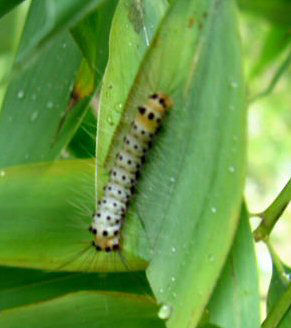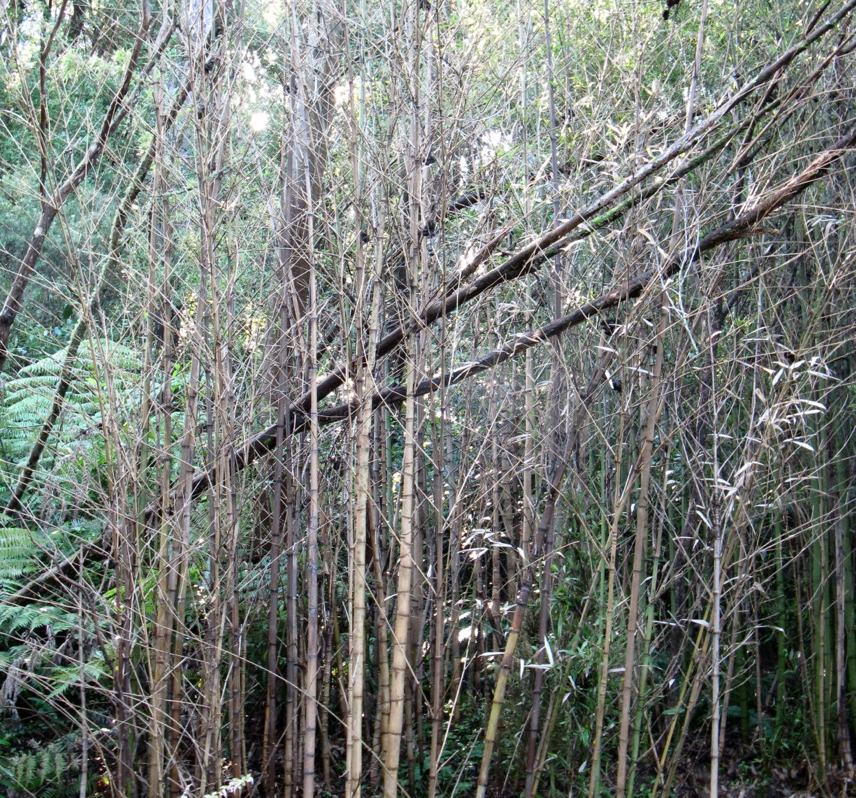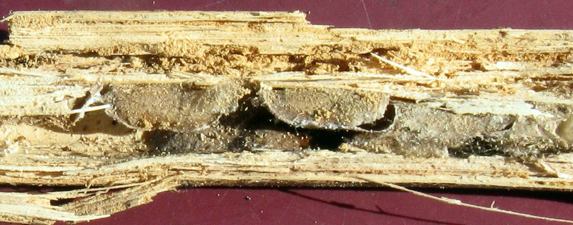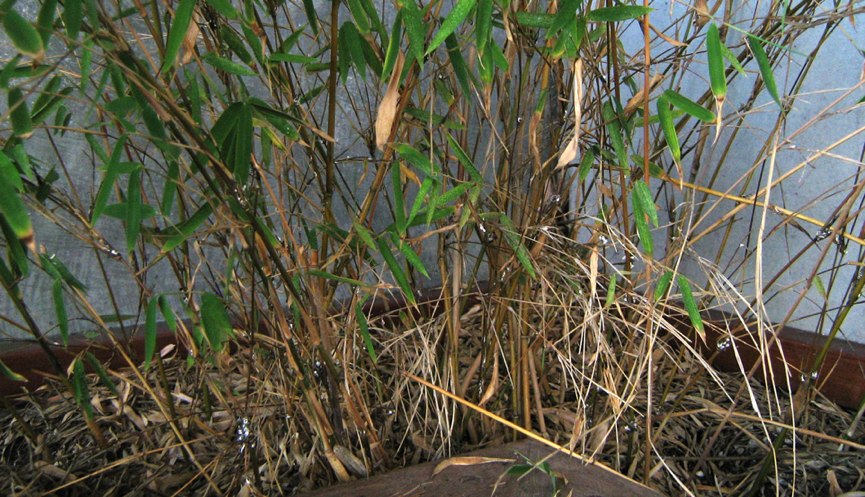PESTS AND DISEASES OF FORESTRY IN NEW ZEALAND
Bamboo moth in Auckland
Scion is the leading provider of forest-related knowledge in New Zealand
Formerly known as the Forest Research Institute, Scion has been a leader in research relating to forest health for over 50 years. The Rotorua-based Crown Research Institute continues to provide science that will protect all forests from damage caused by insect pests, pathogens and weeds. The information presented below arises from these research activities.
From Forest Health News No. 214, March/April 2011.
An Asian moth, Artona martini (Zygaenidae), whose caterpillars feed on various species of bamboo was first found in Whangarei in 1996. There are no native zygaenids in New Zealand so this introduction represented the first record of this family here. There are about 400 species in this family worldwide. Most of them are tropical but they are reasonably well represented in temperate regions. There are about 30 species in Australia.

Artona martini is the most common bamboo leaf feeding zygaenid species in China and Japan. The caterpillars can occur in very high numbers although they can be quite rare between outbreaks. This would seem to be the case in New Zealand. Very high numbers were recorded in Whangarei in 1999 but since then the insect seems to have had a low profile. However, in Auckland this summer very high numbers have been found and damage to some species of bamboo has been quite noticeable. This was brought to the attention of Scion's Forest Protection Diagnostic Laboratory by surveyors carrying out high risk surveillance work in Auckland.
The laboratory has also received three phone inquiries from members of the public in Auckland. Two of these inquiries were about very large numbers of caterpillars "going walkabout" and in one instance entering a house.
Caterpillars were recorded climbing the walls of a house in Whangarei in 1998. Interestingly, all three inquirers thought they had found caterpillars of the gumleaf skeletoniser (Uraba lugens). The caterpillars are superficially similar to A. martini. The caterpillars have urticating hairs that can cause a skin rash accompanied by a burning sensation so handling the caterpillars should be avoided.
The caterpillars can pupate on the host leaves (this was observed in Whangarei in the late 1990s) but recent observations in Auckland have revealed that pupation usually takes place in crevices and holes including inside dead bamboo stems. Caterpillars that are "going walkabout" are undoubtedly looking for suitable pupation sites.
Artona martini is still known only from Northland and Auckland and has been recorded from the following species of bamboo:
- Bambusa multiplex (hedge bamboo),
- Miscanthus sinensis (Chinese fairy grass),
- Phyllostachys bambusoides (giant timber bamboo),
- Pleioblastus viridistriatus (dwarf green stripe bamboo),and
- Shibataea kumasaca (ruscus-leaved bamboo). Continued over...


It has not been recorded from Bambusa oldhamii (Oldham's bamboo) in the field although Artona martini has been successfully reared on it in the laboratory. This bamboo is quite commonly used as horticultural shelter.
In the late 1990s cast caterpillar skins and dead pupae of Artona martini were intercepted on second hand vehicles imported from Japan at Auckland, Tauranga and Nelson. This points to the likely mode of entry into New Zealand.
John Bain & Chris Inglis (SPS Biosecurity)
Further reading: Gill, G.S.C., 2000. A first record of Artona (Balataea) martini (Lepidoptera: Zygaeinidae) for New Zealand. New Zealand Entomologist 23: 33-35.
FROM THE ENTOMOLOGY BENCH
In 1996 we received an unknown caterpillar from bamboo in Whangarei, and more were sent in from the same location this year. Bill Faulds managed to rear some adults, and a specimen was sent to the International Institute of Entomology for identification. The IIE sent it to a guy in Germany, who sent it to a guy in Russia. It seems that, although it is a common bamboo insect in Japan and Eastern China, there was some confusion over the type specimen and the name, so this one has only just been described. It is Artona (Balataea) martini Efetov 1997. (Lepidoptera: Zygaenidae). The family Zygaenidae does not occur naturally in New Zealand, but is represented by about 800 species worldwide. They are small to medium sized moths, many brightly coloured and with interesting forms, which are active during the day. Both the adults and larvae of many species are reported to be poisonous. The British representatives are known as "Burnet Moths". We would be interested to receive reports, and if possible specimens of small dark moths, or of caterpillars, on bamboo. This species is only known from Whangarei at the moment.
(Roger Crabtree FRI)
From Forest Health News, November 2008
COTTONY BAMBOO MEALYBUG IN NEW ZEALAND
Antonina socialis (Pseudococcidae) (cottony bamboo mealybug) was found in Auckland during the course of high risk site surveys (see FHNews 158, January 2006). It was identified by Rosa Henderson, Landcare Research and was found infesting Bambusa multiplex growing in planter boxes in Parnell, Auckland. The collector (Chris Inglis, SPS Biosecurity) stated that the plants were stressed and in the shadow of the building the felted white sac that encloses the insects "glowed like fairy lights".
Antonina socialis was first described from Broxbourne in southeast England on Arundinaria japonica (a species of bamboo) growing under glass. A. socialis is also found in Bermuda, China, Hawaii, Hong Kong, Japan, and the USA. All recorded hosts are species of bamboo.
There are 28 described species of Antonina and with very few exceptions are all found on grasses including many species of bamboo.

This information is intended for general interest only. It is not intended to be a substitute for specific specialist advice on any matter and should not be relied on for that purpose. Scion will not be liable for any direct, indirect, incidental, special, consequential or exemplary damages, loss of profits, or any other intangible losses that result from using the information provided on this site.
(Scion is the trading name of the New Zealand Forest Research Institute Limited.)

 Farm Forestry New Zealand
Farm Forestry New Zealand

